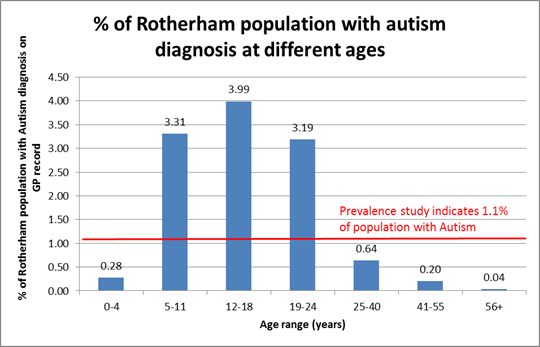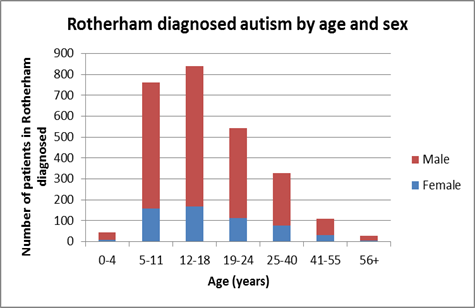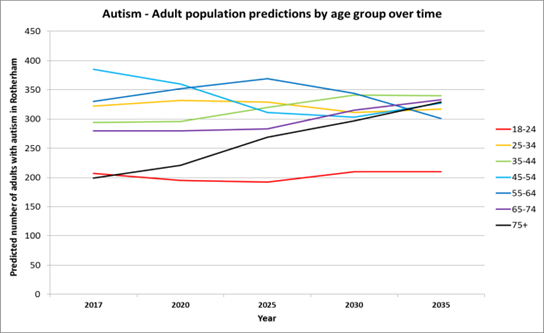Context
National Picture
The National Autism Strategy, ‘Fulfilling and Rewarding Lives’1, was originally published by the government in March 2010 as a result of the Autism Act 2009 and applies to adults in England. This was followed by statutory guidance for local authorities and NHS organisations in December 2010. The Autism Act 2009 required that local authorities and local health bodies work together better support the needs of adults with autism.
Think Autism – Update to the National Strategy
The Government published an update to the national autism strategy, entitled “Think Autism”,2 on 2 April 2014. This followed a review led by the Department of Health, which considered what needs to happen next to make sure progress continues. The document reaffirms the importance of five areas for action to improve the lives of adults with autism, which are in line with those identified in the original national autism strategy:
- increasing awareness and understanding of autism;
- developing clear, consistent pathways for the diagnosis of autism;
- improving access for adults with autism to services and support;
- helping adults with autism into work; and
- enabling local partners to develop relevant services.
In particular, “Think Autism” has a new focus on:
- building communities that are more aware of and accessible to the needs of people with autism;
- promoting innovative local ideas, services or projects that can help people in their communities; and
- how advice and information on services can be joined up better for people.
The National Autism Strategy sets out a vision for all public services in England to respond appropriately to the needs of people with autism. The central vision of the strategy can be summarised as follows:
“All adults with autism are able to live fulfilling and rewarding lives within a society that accepts and understands them. They can get a diagnosis and access to support if they need it, and they can depend on mainstream public services to treat them fairly as individuals, helping them to make the most of their talents”.
Revised Statutory Guidance
The Department of Health published statutory guidance to support the updated strategy in December 2014, following a public consultation exercise. The revised statutory guidance covers nine areas:
- Training of staff who provide services to adults with autism
- Identification and diagnosis of autism in adults, leading to assessment of needs for relevant services
- Planning in relation to the provision of services for people with autism as they move from being children to adults
- Local planning and leadership in relation to the provision of services for adults with autism
- Preventative support and safeguarding in line with the Care Act 2014 from April 2015
- Reasonable Adjustments and Equality – This is a theme that is relevant to all our functions and which we plan to monitor through Equality Impact Assessment;
- Supporting people with complex needs, whose behaviour may challenge or who may lack capacity
- Employment for adults with autism
- Working with the criminal justice system
The Local Picture
From the estimated national prevalence rate, we would expect 1.1% of the Rotherham’s population to be autistic. This is around 2,900 people.3,4.
Rotherham Council’s children’s service have recorded 1,487 children / young people who are autistic, out of this cohort 688 children have an Education, Health and Care Plan (EHCP).
In reviewing Rotherham’s GP records we have found out that there are 2,707 Rotherham registered patients with a diagnosis of autism or Asperger’s syndrome. Most of these are younger people; this tells us two things:
- That overall our local rates of diagnosis are probably higher that the national average
- That there may be a number of adults that we have not diagnosed

Numbers of people diagnosed with autism as split by age and sex
Nationally 15% of autistic people will be female. In Rotherham, this ranges from 22% (0-4 year olds) to 38% (in 41-55 year olds) with an average of 27%. There are a number of theories that might explain why more men and boys than women and girls get an autism diagnosis.
Some think our current assessments don’t work well in identifying autistic women and girls. There are a number of theories that might explain why more males than females are diagnosed; these include current assessments not identifying female presentations and females acting in a way which masks (hides) some of the challenges they face.

Predicting future prevalence in Rotherham

Projecting Adults Needs and Service Information (PANSI) data for 18-64 year olds and Projecting Older People Population Information (POPPI) data for people aged 65 and over, have produced a profile with predicted numbers of autistic people up to 2035. This shows (see Fig 1) that over the next fifteen years there will be a significant increase in the number of autistic people. This is due to increases in the numbers of older autistic people whereas the number in younger age groups will remain relatively stable.
For more Information about autism can be found in Rotherham’s Joint Strategic Needs Assessment:
Rotherham’s Joint Strategic Needs Assessment![]()
1 Department of Health. Fulfilling and rewarding lives: the strategy for adults with autism in England.London : s.n., 2010.
2 Department of Health. Think Autism: fulfilling and rewarding lives, the strategy for adults with autism in England: an update. London : s.n., 2014.
3 Baird G, Simonoff E, Pickles A, et al. ‘Prevalence of disorders of the autism spectrum in a population cohort of children in South Thames: the Special Needs and Autism Project (SNAP)’, Lancet, 2006; 368(9531):210–215
4 Brugha TS, McManus S, Bankart J, et al. ‘Epidemiology of autism spectrum disorders in adults in the community in England’, Arch Gen Psychiatry, 2011, 68(5), 459–465
